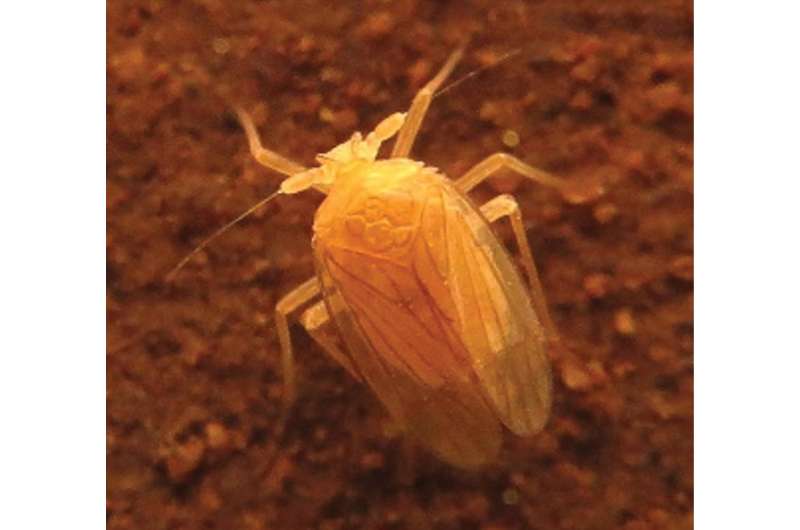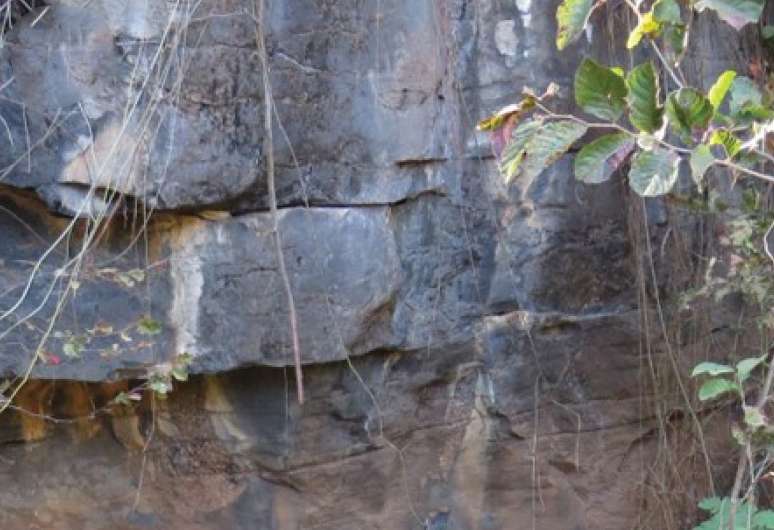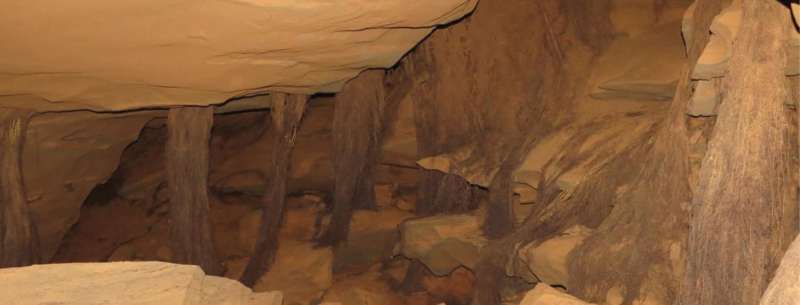New blind and rare planthopper species and genus dwells exclusively in a Brazilian cave

This cave planthopper species new to science is only the second dwelling exclusively in the subterranean depths of Brazil from its family. Surviving without seeing the light of the day at any point of its life, this species has neither the eyes, nor the vivid colouration, nor the functional wings typical for its relatives.
Yet, these are only part of the reasons why the new planthopper needed to have a separate new genus established for itself. The new species is described by a research team from the Center of Studies on Subterranean Biology, Brazil, in the open access journal Deutsche Entomologische Zeitschrift.
The planthopper is called Iuiuia caeca, with the genus name (Iuiuia) referring to the locality, where it was found, and its species name (caeca) translating to 'blind' in Latin. It is predominantly yellowish insect that measures only 3 mm, which is small even by planthopper standards.
At first glance, the new cave planthopper appears as if it has been hiding from human eyes all along. So far, it has been located in a single cave in the Iuiú municipality, Bahia state, Brazil, where the team of Prof. Rodrigo Ferreira, Federal University of Lavras (UFLA), Brazil, spotted the insect. He then contacted cave planthopper specialist at the Museum für Naturkunde, Berlin, Prof. Hannelore Hoch, and collaboratively they decided to document and describe the new species. The limestone cave is yet to be fully explored since it floods during the rainy periods.

In the meantime, the cave's only entrance is a small opening, which, on the other hand, clearly imposes a huge stability to the atmosphere. Moreover, although the researchers visited the cave on five occasions, they managed to find the species on two of them only. The planthopper was nowhere to be find in the neighbouring subterranean habitats either, which strongly suggests that it is a rare short-range endemic.
Being such a rarity, the blind new planthopper ought to be on the conservation radar. Although the scientists did not notice any signs of the cave having ever been visited by humans before; and its immediate surroundings have not been impacted by mining activities, yet, such threat is not to be excluded. In fact, the area is being currently evaluated for its potential for limestone extraction.
"It is to be hoped that legal measures for the conservation of the subterranean fauna of Brazil - which constitutes one of the country's unique biological resources - will be developed and consequently reinforced," conclude the authors.

More information: Hannelore Hoch et al, Iuiuia caeca gen. n., sp. n., a new troglobitic planthopper in the family Kinnaridae (Hemiptera, Fulgoromorpha) from Brazil, Deutsche Entomologische Zeitschrift (2016). DOI: 10.3897/dez.63.8432
Provided by Pensoft Publishers





















